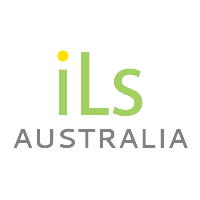Our goal at iLs is to help people reach their full potential by providing tools to improve brain and nervous system function. To meet this goal, we are always engaged in research to ensure that we’re doing what we say we are.
Through research, we often uncover new user populations that can benefit from iLs’ therapy products. This fall, there are several studies and trials in various states of completion that we’d like to share with you.
Using the Focus System with Children with Acute Lymphoblastic Leukemia (ALL)
Advances in cancer treatment have resulted in impressive survival rates of childhood cancer. Unfortunately, the cancer treatment protocol takes a toll on the patient’s physical and cognitive abilities. One innovative pediatric oncology practice in Oklahoma chose to evaluate the effectiveness of iLs’ Focus System programs in recovering their physical and cognitive abilities.
Two seven-year-old children in the maintenance phase of their treatment completed 10 sessions of the Sensory & Motor Program and all 40 sessions of the Reading and Auditory Processing Program. Both had met their developmental milestones until being diagnosed with ALL and undergoing medical procedures and chemotherapy treatment. “C” is a girl who developed difficulties in reading and written expression. “H”, a boy, developed reading delays and problems with fine motor skills.
After completing the program three times weekly over four months, both “C” and “H” evidenced significant gains in reading fluency skills and increases in academic performance, not only in the areas where they experienced declines due to their cancer treatment program, but generally across all academic areas. And “H” evidenced gains in fine motor coordination skills.
It is gratifying to learn that iLs Focus System programs can play a role in recovery for ALL patients.
– Kate O’Brien Minson, iLs co-Founder
The Rebecca School SSP Pilot Study
Rebecca School is a private day school in New York City that specializes in teaching people ages four to twenty-one who have a range of neurodevelopmental disorders, including Autism Spectrum Disorder (ASD). They are conducting a pilot study to assess the effectiveness of the Safe and Sound Protocol (SSP) to reduce auditory hypersensitivities, improve auditory processing, calm physiological/emotional state, and support spontaneous social engagement.
Roughly 20 students will use the SSP intervention at school with their Occupational Therapist. Both objective and subjective assessments will be completed by the students’ parents, speech therapists and teachers, both pre- and post-SSP.
We are hopeful that having many students in a common school setting doing the SSP at a similar time may shift the social environment toward better coregulation.
– Karen Onderko, iLs Director of Research and Education
Evaluating the Effectiveness of the SSP Home Program for Symptoms of Prader-Willi Syndrome (PWS)
People with the rare genetic disorder Prader-Willi Syndrome display behaviors that are consistent with a compromised Social Engagement System. This can lead to problems associated with state regulation (like tantrums), ingestion (difficulties in sucking at birth), intonation of voice, auditory hypersensitivities, and socialization. This study, conducted by Dr. Stephen Porges’ research team at Indiana University, will assess the ability of the Safe and Sound Protocol (SSP) to rehabilitate aspects of the Social Engagement System – particularly social engagement and regulation.
The SSP will be implemented at home by a parent or caregiver under the direction of an iLs Home Coach. Assessments will include: pre- and post-SSP vocal samples for analyses of prosody or intonation of voice, the BBC Sensory Scales, the Developmental Behavior Checklist and iLs’ Measure of Foundational Abilities (MFA).
Pilot Study on the Effect of Bone Conduction on the Autonomic Nervous System
We have observed for over a decade that the bone conducted music used in both the Focus System headsets and in the Dreampad had a calming influence on both children and adults. No independent research has been conducted on this effect until now.
Dr. Jim Grigsby’s cognitive neuroscience lab at The University of Colorado Denver will be testing the hypothesis that listening to music via bone conduction decreases sympathetic arousal and activates the parasympathetic nervous system, which is involved in relaxation. They’ll be assessing heart rate, heart rate variability (HRV), and Galvanic Skin Response in human subjects while listening to music in two conditions: via air conduction only, and air and bone conduction.


